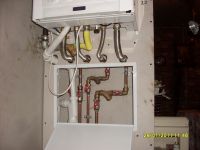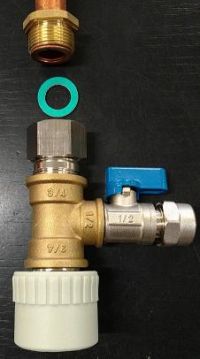Hello, I have a small problem, I search forums and I can't find anywhere like this:
I do all the water installations at home (CH and CWU) and ...
gas furnace will be TERMET ECOCONDENS SILVER 20 KW single function + water tank 150l. What should I do with the boiler's "height":
- finish "interrupting" the installation with a ball valve (and arrange a gas boiler fitter for gas connection and possibly for my unconnected pipes from central heating and hot water)? Some paper has to give it hooked up and it's tight?
- do I assemble all pipes to the furnace and the fitter only comes, connects the gas and deletes PLN
- maybe some flexible hoses? (what do you think about these snakes ?? Has anyone or heard of them? They can withstand hot water for CO?

Help, because I'm in a pinch
I do all the water installations at home (CH and CWU) and ...
gas furnace will be TERMET ECOCONDENS SILVER 20 KW single function + water tank 150l. What should I do with the boiler's "height":
- finish "interrupting" the installation with a ball valve (and arrange a gas boiler fitter for gas connection and possibly for my unconnected pipes from central heating and hot water)? Some paper has to give it hooked up and it's tight?
- do I assemble all pipes to the furnace and the fitter only comes, connects the gas and deletes PLN
- maybe some flexible hoses? (what do you think about these snakes ?? Has anyone or heard of them? They can withstand hot water for CO?

Help, because I'm in a pinch



 they installed what they had on hand and how best they could
they installed what they had on hand and how best they could  in the end they did for themselves
in the end they did for themselves 
